
Understanding the Role of Excavator Hydraulic Cylinders in Modern Construction Machinery
In the realm of modern construction machinery, the significance of the Excavator Hydraulic Cylinder cannot be overstated. As a crucial component in excavators, these hydraulic cylinders are responsible for the powerful movements required to lift, dig, and move earth and materials across job sites. According to a recent report by the Global Hydraulic Equipment Market, the demand for hydraulic cylinders, including those used in excavators, is expected to grow at a CAGR of 5.2% from 2021 to 2026, reflecting a surge in construction projects worldwide.

Expert in hydraulic systems, Dr. James Reynolds, highlights the efficiency of excavator hydraulic cylinders, stating, “The advancement in hydraulic technology not only improves operational effectiveness but also significantly reduces energy consumption in heavy machinery.” This statement captures the essence of how excavator hydraulic cylinders are evolving to meet the demands of modern construction. With improved design and materials, these cylinders enhance machine performance while contributing to sustainability efforts within the industry.
As the construction sector continues to modernize, understanding the role and innovations surrounding Excavator Hydraulic Cylinders is crucial for professionals looking to leverage the best technologies available for their projects. This exploration into the "Top 10" aspects of excavator hydraulic cylinders will provide valuable insights into their functionality, efficiency, and future developments in this pivotal industry.
The Importance of Hydraulic Cylinders in Excavator Performance Metrics
Hydraulic cylinders are pivotal to the performance metrics of excavators, influencing their efficiency, power, and precision. According to the latest report from the International Federation of Robotics, excavators equipped with advanced hydraulic systems can increase operational productivity by up to 30% compared to traditional models. This enhancement is primarily due to the superior force and response times offered by modern hydraulic cylinders, which allow operators to handle heavy loads with greater control and speed, thereby significantly reducing cycle times on construction sites.
Moreover, the design and quality of hydraulic cylinders directly correlate with the durability and maintenance costs of excavators. A study published by the American Society of Civil Engineers highlights that excavators experiencing hydraulic cylinder failures can incur repair costs totaling up to 20% of their initial investment. By integrating high-performance hydraulic cylinders, manufacturers not only extend the lifespan of the equipment but also provide a competitive edge in an industry that increasingly emphasizes efficiency and cost-effectiveness.
Consequently, the role of hydraulic cylinders in modern excavators transcends mere functionality, marking them as critical components in the overall performance and reliability of construction machinery.
Key Specifications: Pressure Ratings and Load Capacities of Excavator Cylinders
Hydraulic cylinders play a pivotal role in the operation of excavators, serving as the driving force behind their movement and functionality. Key specifications such as pressure ratings and load capacities significantly impact the performance and efficiency of these machines. According to the International Society of Automation (ISA), many modern excavator cylinders can operate at pressure ratings ranging from 3,000 to 5,000 psi, enabling efficient lifting, digging, and maneuverability under demanding conditions. Higher pressure ratings allow for enhanced performance, making it crucial for manufacturers to ensure their hydraulic components can withstand these requirements.
Load capacities are equally essential, with typical hydraulic cylinders in medium to large excavators capable of handling loads between 20 to 50 tons, and in some advanced models, even more. A report by the Construction Equipment Association indicates that as excavator technology advances, manufacturers are designing cylinders with reinforced materials that offer increased load-bearing capabilities without significantly increasing weight. Such advancements ensure excavators can efficiently manage heavy loads, leading to improved productivity on job sites.
Understanding these specifications is vital for operators and engineers involved in construction machinery to optimize performance and ensure safety standards are met.
Innovative Design Trends: Advancements in Hydraulic Cylinder Technology
Recent advancements in hydraulic cylinder technology are driving innovative design trends within modern construction machinery. Hydraulic cylinders, crucial for providing the necessary force and motion in excavators and other heavy equipment, are evolving to meet the demands of efficiency and precision. The integration of electro-hydraulic systems is one of the significant breakthroughs, enhancing functionality and control. These systems allow for more responsive operation and improved fuel efficiency, which is essential in an industry increasingly focused on sustainability.
Additionally, the trend towards miniaturization and lightweight materials is shaping the design of hydraulic cylinders. Engineers are exploring new materials that offer greater strength-to-weight ratios, reducing the overall weight of machinery while maintaining performance standards. This not only alleviates fuel consumption but also improves maneuverability on site. As the construction sector embraces these innovative trends, the role of hydraulic cylinders will continue to be vital in enhancing the operational capabilities of modern machinery.
Understanding the Role of Excavator Hydraulic Cylinders in Modern Construction Machinery - Innovative Design Trends: Advancements in Hydraulic Cylinder Technology
| Dimension | Specification | Material | Application | Advancements |
|---|---|---|---|---|
| Bore Diameter | 50 mm | High-Strength Steel | Excavators | Improved Load Capacity |
| Stroke Length | 600 mm | Aluminum Alloy | Backhoes | Enhanced Speed |
| Working Pressure | 250 bar | Carbon Composite | Loaders | Leak-Resistant Sealing |
| Piston Rod Diameter | 40 mm | Hardened Steel | Mini Excavators | Corrosion Resistance |
Maintenance Best Practices for Prolonging Excavator Hydraulic Cylinder Lifespan
Proper maintenance of excavator hydraulic cylinders is crucial for ensuring their longevity and efficiency in modern construction machinery. According to the National Fluid Power Association, over 30% of hydraulic system failures can be attributed to improper maintenance practices.
Regular inspection and maintenance tasks, such as checking the hydraulic fluid levels, monitoring for leaks, and ensuring the cleanliness of hydraulic systems, can significantly reduce the likelihood of hydraulic cylinder failures.
Moreover, the implementation of routine maintenance schedules based on manufacturer recommendations can lead to as much as a 25% increase in the lifespan of hydraulic cylinders. Utilizing high-quality hydraulic fluids and filters also aids in reducing contaminants that can degrade the performance of hydraulic systems.
A study by the International Journal of Hydraulic Engineering indicated that cylinders that are serviced every 500 hours of operation showed a remarkable decline in operational failures compared to those maintained less frequently.
By prioritizing these best practices, construction professionals can optimize the performance of their excavators while minimizing downtime and repair costs.
Impact of Hydraulic Cylinder Efficiency on Overall Construction Project Productivity
Hydraulic cylinders are critical components in modern excavators, directly influencing their efficiency and the overall productivity of construction projects. According to a report by the International Society for Trenchless Technology, the effective output of hydraulic systems can range from 85% to 95%, significantly impacting how quickly and efficiently tasks are completed. A study published by the Construction Industry Institute indicated that projects utilizing high-efficiency hydraulic systems could reduce operational time by up to 25%, enabling teams to complete projects ahead of schedule.
Tips: Regular maintenance of hydraulic cylinders can prevent costly breakdowns and ensure optimal efficiency. Inspect seals and connections frequently, as small leaks can lead to significant performance loss. Furthermore, utilizing advanced hydraulic systems with integrated sensors can provide real-time data on performance, allowing for timely interventions and adjustments that enhance productivity.
In the fast-paced construction industry, the importance of hydraulic cylinder efficiency cannot be overstated. Enhancing the efficiency of these components not only improves the speed of operation but also contributes to greater fuel savings and reduced environmental impact. As reported by the Energy Efficiency in Industry group, optimizing hydraulic systems can lead to energy savings of up to 20%, translating to lower operational costs and greater project viability in today’s competitive market.
Impact of Hydraulic Cylinder Efficiency on Construction Project Productivity
Related Posts
-
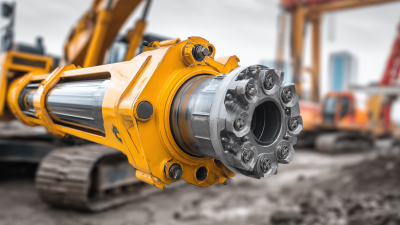
Maximizing Efficiency: The Impact of Excavator Hydraulic Cylinder Technology on Construction Productivity
-
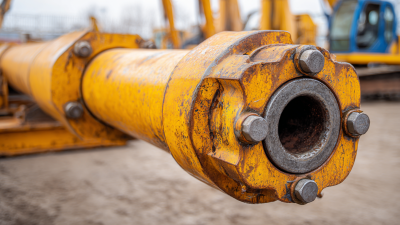
Ultimate Guide to Choosing the Right Hydraulic Cylinder for Excavators with Key Specs and Tips
-
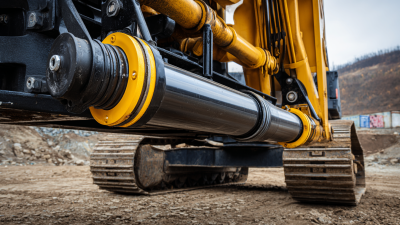
Understanding the Functionality of Excavator Hydraulic Cylinders
-

How to Choose the Right Hydraulic Cylinder for Excavator Efficiency and Performance
-
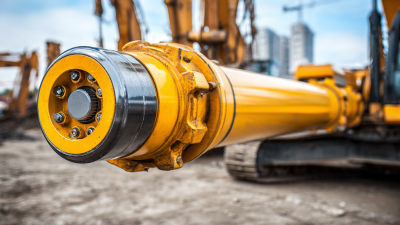
The Ultimate Guide to Choosing the Right Hydraulic Cylinder for Your Excavator Needs
-
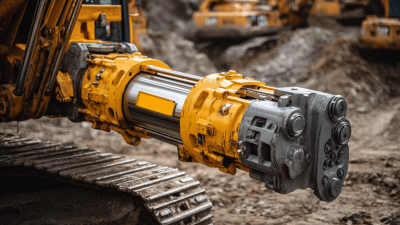
Understanding Excavator Hydraulic Cylinders: Essential Maintenance Tips for Optimal Performance
